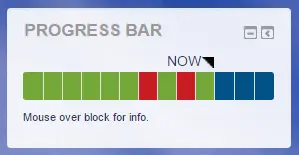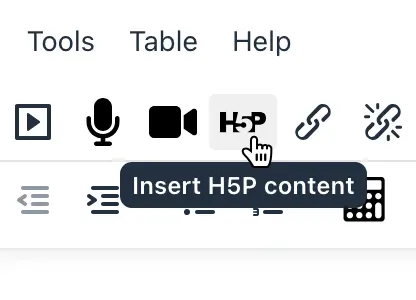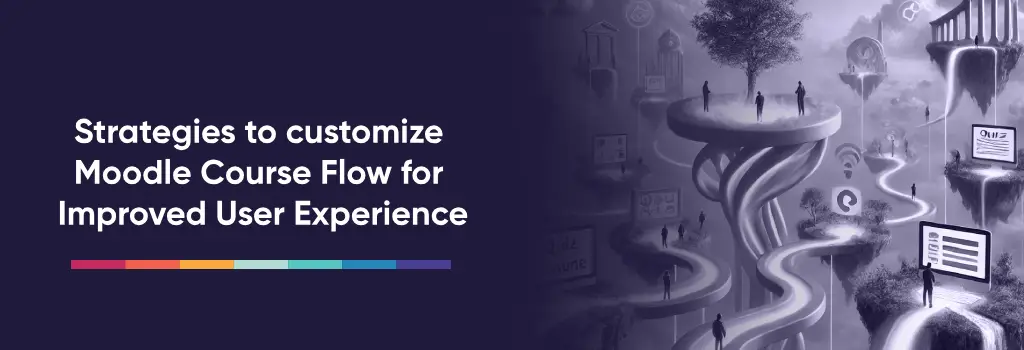A smooth course flow is one of the most powerful ways to improve learner experience in Moodle. When courses feel scattered or repetitive, learners become frustrated, lose track of their progress, and disengage. On the other hand, a customized course flow provides structure, motivation, and clarity. It ensures that learners always know what they need to do, when to do it, and why it matters.
I recently migrated my site to Mindfield from another host, and the experience couldn’t have been better. Mindfield kept working until they were certain that my site was operating as well as it was before, and they even helped clean up a few issues to improve my site’s performance – issues my prior host never mentioned. I also found Mindfield’s communication to be excellent. Before the migration, they prepared me for what to expect, and during the migration they kept me well-informed. No small feat considering that changing hosts is inherently stressful! They also provided clear and concise explanations when required. I’d highly recommend Mindfield if you’re looking for an IT consultant, developer, or host.
Jim Benedek
Jim Benedek
Owner, Student First Media Inc.
review Source: Google Reviews
Outline
Building Structured Journeys with Activity Rules

The backbone of customized course flow in Moodle is activity completion tracking combined with Restrict Access. Together, they allow administrators to define exactly what learners must do before moving forward. This transforms a course from a loose collection of activities into a carefully guided journey.
For example, an onboarding course can require learners to watch an introductory video, complete a short feedback activity, and acknowledge workplace policies before granting access to role specific training modules. Compliance training can mandate passing a knowledge quiz before releasing certification tasks. By layering in requirements like “must achieve 80% or higher,” you ensure learners are not just clicking through but engaging with the material.
The strength of structured journeys lies in clarity. Learners always know their next step, which reduces hesitation. It also helps administrators identify where learners get stuck, since completion data shows exactly which activity becomes a bottleneck. That said, the goal should not be to lock everything down. Overuse of restrictions can frustrate advanced learners or slow down motivated ones. Striking the right balance, mandatory checkpoints for critical material, flexibility for less essential activities, creates a flow that is both disciplined and learner friendly.
Designing Course Layouts that Guide Navigation

Course format and navigation design play a huge role in shaping how learners experience flow. Moodle offers several formats: Topics, Weekly, Single Activity, Tiles, Grid. The choice between them should be intentional.
The Weekly format is natural for courses tied to a semester or schedule, where pacing is externally controlled. The Tilesor Grid format creates a clean, modular look ideal for corporate training, where learners need clarity and quick access without scrolling through long pages. The Single Activity format works best for assessment driven programs or workshops, where focus is paramount.
Beyond formats, the way activities are named and arranged is equally critical. Labeling modules with action oriented titles such as “Step 1: Introduction,” “Step 2: Knowledge Check,” or “Step 3: Case Study” guides learners mentally as well as visually. Adding icons, collapsible sections, or even color coding helps reinforce this hierarchy. A clear layout reduces the time learners spend figuring out “where to click next” and keeps them immersed in the learning process.
Ultimately, good layouts are not just about aesthetics. They are about cognitive flow. A visually structured course reduces overwhelm, minimizes distraction, and helps learners focus on content rather than navigation.
Making Progress Visible and Adaptive

One of the strongest motivators in e-learning is the ability to see progress unfold. Moodle’s progress bars, completion checkmarks, and plugins like Checklist provide learners with constant feedback on how far they have come and what remains. This creates momentum, a sense of achievement, and a clear roadmap to completion.

For instance, a certification course might display a checklist of required modules. Each completed activity adds a checkmark, and a visual progress bar fills up as learners advance. This visibility fosters accountability: learners no longer wonder how much is left, they can see it at a glance. Instructors benefit too, since these toolsh5p provide quick insights into who is on track and who may need extra support.
Taking progress a step further, Moodle allows conditional flows where the learner’s path adapts to their performance. A high score on a quiz can unlock advanced material, while a lower score redirects the learner to review content. Different cohorts, such as sales teams versus managers, can be funneled into tailored learning streams within the same course shell. This kind of branching ensures learners feel challenged at the right level without being forced into irrelevant material.


Visible progress, combined with adaptive branching, transforms course flow from static to dynamic. It reassures learners that they are moving forward and demonstrates that the course is responsive to their efforts.
Creating Engaging Experiences through Multimedia and Certification Pathways

Course flow is not just about sequence, it’s also about how each step feels. A course that consists only of text and multiple choice quizzes may have structure, but it risks disengagement. By integrating multimedia and interactive elements, administrators can keep learners invested in the journey.
Moodle supports direct integration with H5P, which opens up a wide range of interactive options: branching scenarios, interactive videos, drag and drop exercises, or mini games. Imagine a workplace safety course where, instead of just reading procedures, learners step through a simulation of hazard scenarios, making choices that impact outcomes. Or a leadership training course where after a short video lecture, learners engage in a branching dialogue role play.

To learn more about H5P, check out our articles: Can I Sell H5P Courses and H5P Not Working on Moodle App
Engagement also extends into assessments and certifications. Rather than abrupt “final tests,” quizzes can be designed as gradual checkpoints that build confidence. Automatic certificate issuance upon completion provides a satisfying conclusion and tangible reward. For longer training journeys, bundling courses into Learning Paths ensures certifications feel like the natural outcome of a guided sequence rather than a disconnected add-on.
When engagement is built into the flow itself, learners perceive each stage as part of a coherent narrative. One that informs, challenges, and rewards them. This sense of continuity enhances satisfaction and increases the likelihood of course completion.
Expert Hands, Seamless Learning Journeys

Customizing Moodle’s course flow goes beyond turning on settings, it requires balancing technology, pedagogy, and user experience. While tools like completion tracking, conditional activities, and alternative course formats are powerful, Moodle experts can quickly become overwhelming if not configured correctly. Overuse of restrictions, poor plugin choices, or inconsistent navigation can frustrate learners and undo the very benefits course flow customization is meant to deliver.
Moodle experts bridge that gap. They understand how to align training objectives with course flow design, ensuring learners move smoothly from one stage to the next without unnecessary friction. Their knowledge of reliable plugins, adaptive learning strategies, and best practices in layout design helps organizations create courses that are not only structured but also engaging and scalable.
Bringing in expert support also saves valuable time. Instead of spending weeks experimenting with conditional rules or fixing misconfigurations, organizations gain a stable, polished environment from the start. With a Moodle expert, course flow becomes a strategic advantage, supporting better learner engagement, higher completion rates, and stronger outcomes across the training program.

